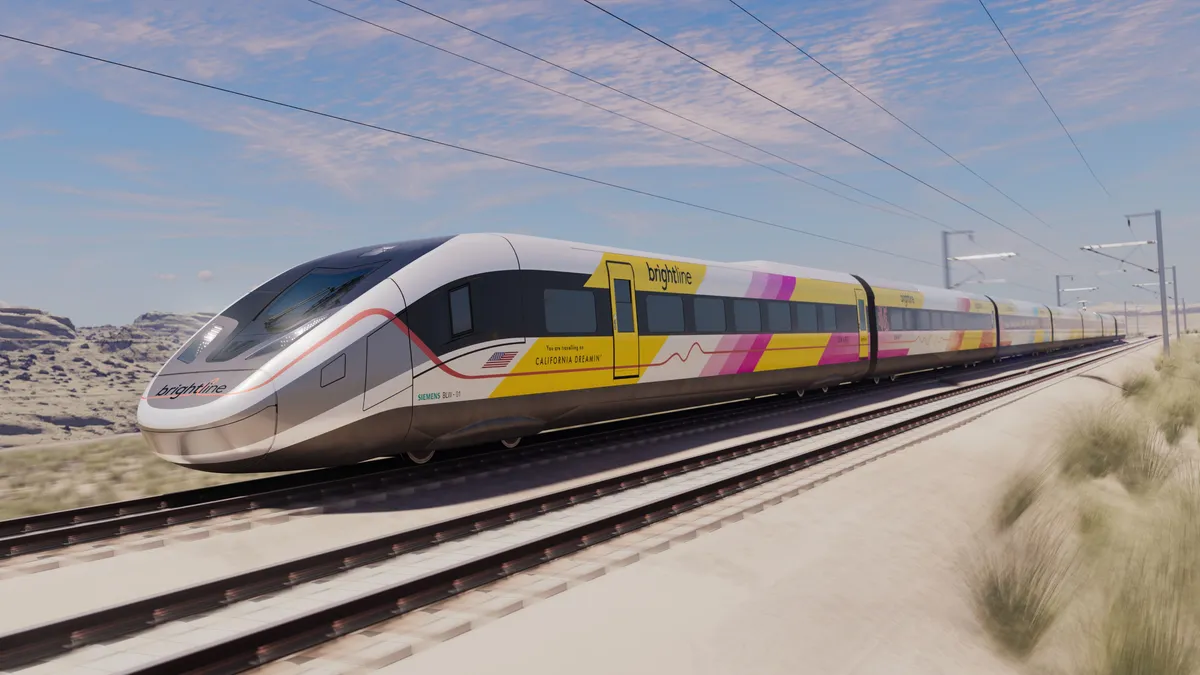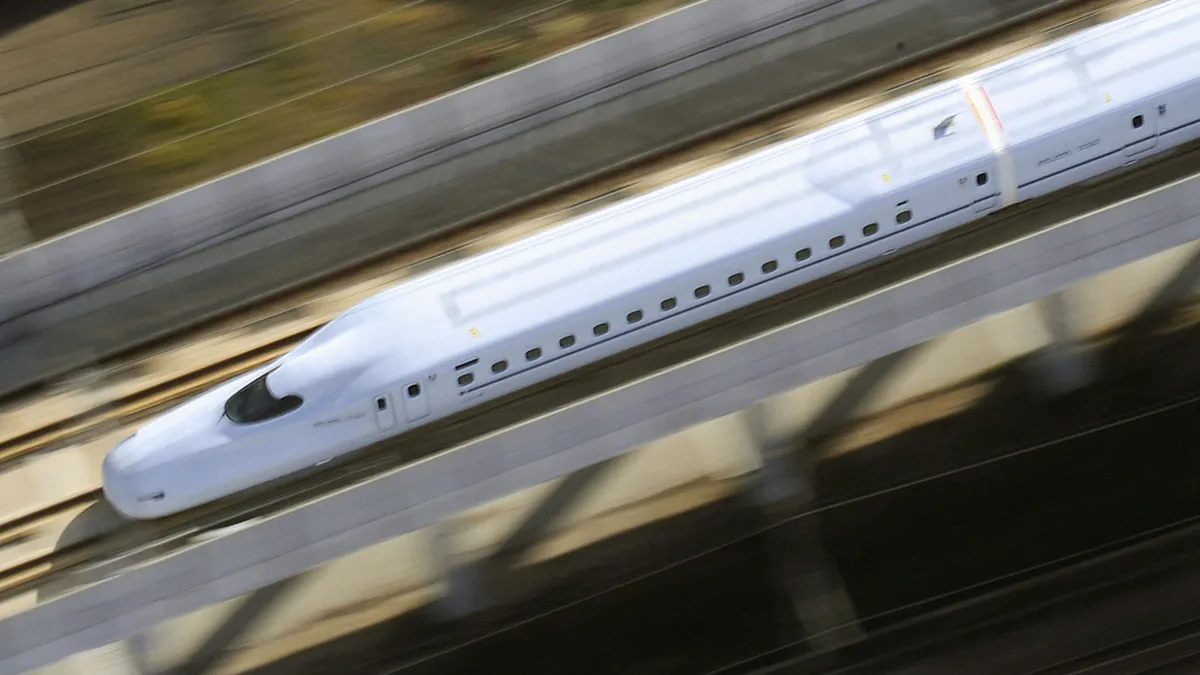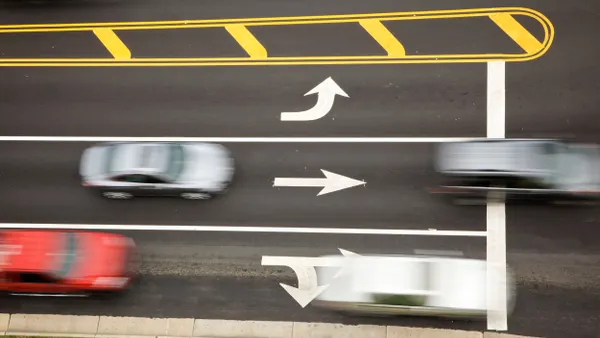For the first time in the U.S., two dedicated high-speed rail lines are being built from the ground up in California and Nevada, while more are being planned in Texas, Georgia, North Carolina, Oregon and Washington. As soon as 2028, riders may be able to travel between Las Vegas and Southern California at up to 200 mph. Although such bullet trains are common in Europe, China and Japan, high costs and contentious political battles have slowed the technology in the United States.
But the times may be changing, say leaders and advocates of high-speed rail projects. They believe the U.S. could be at the dawn of a new, high-tech manufacturing industry for these trains and the infrastructure they require, which could create jobs and offer travelers a safer, more sustainable alternative to congested roads and the hassles of flying.
For this three-part series, Smart Cities Dive closely examined the stop-and-start history of U.S. high-speed rail and spoke with key industry and government players about what the future could hold. Here are the challenges and opportunities they see.














